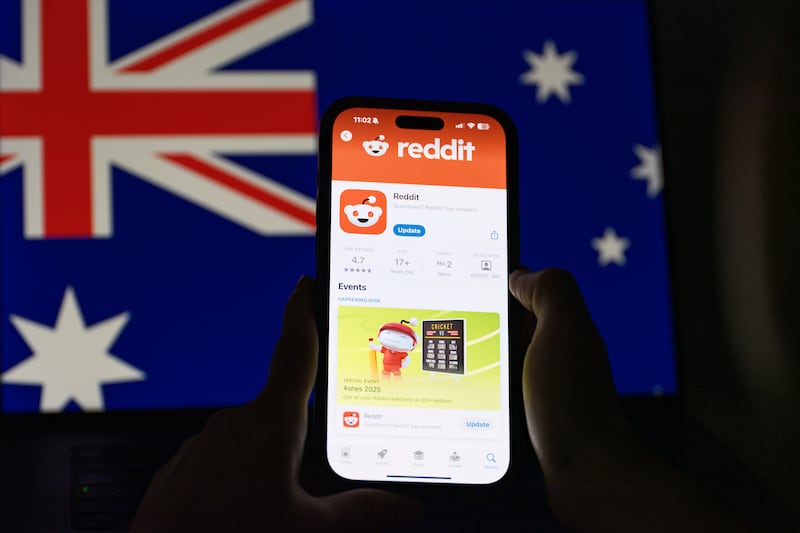There are few – if any – industries that have been left completely untouched by the march of technology. The race to make things better, more effective, more efficient has seen technology wind its way into most industries.
One area that has seen serious leaps in recent years is advertising. The days when ads were restricted to traditional media are long gone, and the industry is certainly feeling the impact.
Predictions by business intelligence company GroupM forecast that television advertising revenues would grow only 1.7 per cent in 2019, falling from the 2.3 per cent recorded in 2018.
Radio advertising was setting itself up for a fourth year of decline, falling by 4.8 per cent in 2019, while newspaper advertising revenues were expected to decline 11 per cent in 2019.
The reasons for such a decline have been well documented. Cost and effectiveness have played a part in making online advertising seem like a good deal.
Instead of targeting a broad demographic on TV, advertisers can tailor their ads to an increasingly specific audience, eg women with children who live in a certain area, or men who like a specific hobby and have been in a certain location regularly.
This can often happen while users are blissfully unaware of the amount of data being gathered, allowing companies to build up significant profiles of people and their interests without their knowledge as they visit various websites and click away the various pop-ups seeking permission for cookies and other trackers.
While privacy regulations such as GDPR, implemented at European level, have put the brakes on some of these practices, or at least forced companies to make their customers aware of the data collection and its use, there is still quite a bit of data collection going on.
Potential market
But there is more to ad tech than just tracking your potential market. From a company point of view, the advances in technology have given them better weapons in competing with their rivals. It was this particular market that Dublin-based LogoGrab decided to target.
The company uses artificial intelligence and image recognition to find and recognise ads online through searching for logos. It can be used for monitoring social media to find out how much talk your rivals are generating on publicly accessible accounts.
We knew that there was an opportunity in the image-recognition intelligence space
Co-founder Alessandro Prest was a researcher with Google working on the company's core image-recognition technologies; Luca Boschin was more focused on building businesses and putting products together. The duo identified a gap in the market and came up with a solution: using image recognition to identify logos.
“A few years back, we knew that there was an opportunity in the image-recognition intelligence space with a specific focus on logo recognition,” explains Boschin. “So in 2014, we started focusing on building this technology because no technology of this kind was available with the level of reliability and precision we wanted to deliver on the market. After a few years of research and development, in 2016 we started delivering the technology to the market as an API.”
Logo-recognition software itself wasn’t the focus; for Boschin and Prest it was about getting the technology to work on a large scale without sacrificing performance and precision.
“It’s one thing to have technology that recognises a few hundred logos. It’s another thing to have a technology that recognises tens and hundreds of thousands of logos.”
Minimal funding
LogoGrab has done this on minimal funding too. “Over the last few years, we had a very successful jump-start to the business, especially considering the very little amount of funding we received as a startup,” says Boschin. “Today, all the leaders in the social media monitoring space would be using our technology to help brands understand where and who talks about their products on social channels by looking at pictures people share on social media and the conversation that has been around.”
Prest says logo detection is the foundation that gave the company a reputation on the market as a credible vendor for the technology. “We identified ad detection as being a very good service to offer together with logo detection,” he says.
The company recently unveiled a new ad-detection feature that can provide businesses with insights on what their competitors are doing – and spending – online, helping them to quickly adapt their advertising strategies, based on rivals’ activity.

The technology can detect the format and dimensions of online ads, such as whether they are banner ads or another format; categorise the content of the ads and assign them labels from the 11,000 on its system, providing details on what is visible in the ads, such as gender, age, animals and objects; and detect visible logos, or lack thereof, identifying brands within the ads.
The company’s adaptive learning engine is capable of scanning millions of images and videos, identifying what brands are being used and feeding that data back to media monitoring and brand monitoring companies. It essentially takes the backbreaking work out of a section of media monitoring for the companies in this space, and delivers usable intelligence to their clients, taking the work of thousands of people and filtering down the content .
The company has yet to put a value on its potential market. But Boschin says that with the current technology it’s feasible to build a business that turns over several tens of billions of euro yearly. The question is how to get there.
‘Total addressable market’
“It’s almost on a monthly basis our total addressable market size increases because, through partnerships, we realise there are are new segments where we didn’t even imagine this type of technology could bring in efficiencies that were not possible before.”
While companies can target their markets with terrifying precision, they can also find themselves blocked
The technology can also be used by brands to identify counterfeit products being sold online on platforms such as eBay, providing it with another avenue for revenue outside the advertising space. That could then be rolled out to real-world operations that could detect counterfeit holograms, allowing the supply chain to validate genuine holograms on products being shipped.
There is one disadvantage to online advertising from an ad-buyer point of view. While companies can target their markets with terrifying precision, they can also find themselves blocked. The technology to block annoying ads – from pop-ups and banner ads to small text ads and ones that wrap around an entire web page –has become increasingly advanced, and consumers are becoming more aware that it exists.
That said, the growth of ad-blocking technology showed some signs of slowing last year. According to Emarketer, about one in four internet users were expected to block ads in 2019 on at least one device, totalling around 27 per cent of internet users by the end of the year. That is lower than in Germany, where almost 33 per cent of internet users were expected to use some form of ad blocking last year.
But while ad blockers may be showing signs of slowing growth, the genie is somewhat out of the bottle. Consumers are becoming increasingly savvy about the level of data that is being gathered on their online activity, and they are starting to push back on it.
Control over data
In August 2019, a year after it promised to introduce the feature, Facebook announced that it would curtail the data collected and associated with its users' profiles by giving them control over the data. Off-Facebook activity, as it was called, is gathered by businesses using certain Facebook tools on their apps and websites, and grouped according to user based on device identifiers. The information is valuable to Facebook and businesses because it can be used to target advertising to individual accounts. But it can also be a blunt tool, because it doesn't take into account that more than one person can use a single device.
Browsers such as Mozilla's Firefox or Chromium-based browser Brave block ads and trackers
The new tool rolled out by Facebook allows users to see any activity linked with their Facebook account from browsing on other websites or apps, clear that from their Facebook account and stop it from associating any future activity on their devices with their Facebook profile.
For Irish users, this isn’t a new thing; Facebook began offering it here in August last year, using the country as a test bed for the new feature before rolling it out elsewhere. That wider release started this week, with Facebook pronouncing the initial test a success with strong take-up.
It doesn’t mean that the data isn’t still being collected, by the way. It just means that it won’t be linked to your particular account.
Tracker blockers
To try to cut down on the amount of data being gleaned as you browse the web, consumers are turning to a range of measures, from virtual private networks that hide their location and make it more difficult to build a picture of your browsing behaviour to tracker blockers such as Ghostery that strip out some of the most common ad trackers, including Facebook Pixel, Google’s AdSense trackers and DoubleClick advertising tools. Browsers such as Mozilla’s Firefox or Chromium-based browser Brave block ads and trackers, with the latter doing it out of the box.
Apple is perhaps the most active of the big tech giants in the privacy field. The company has made it a feature of its products to protect and shield personal data as much as possible, acting as an intermediary of sorts between the people who use its devices and services, and the companies that seek to know an increasing amount of detail about their target market.
The provision of privacy is now the hottest ticket in town, as people realise the price they have paid for giving online software businesses free access to their information in return for services. It seems that once more the industry will have to adapt to survive.



















